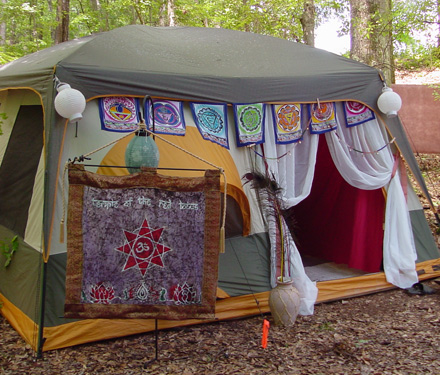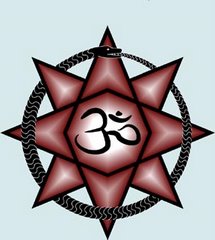Essay - On Gender & Sacred Sexuality
By Inara de Luna
© April 2006
We all hold within us the energies of both masculine and feminine. These are short-cut words, used to facilitate our understanding of the concepts. But they tend to, in the process, oversimplify the concepts, thus limiting them in our minds.
Masculine refers to the active principle; the feminine to the receptive principle. We assign these principles to specific genders because the anatomy of each gender actually corresponds symbolically to the principle it is associated with. For instance, the receptive principle is called the feminine principle - look at the womb, a receptacle for the active sperm, and for cradling the new life that will begin there. Look, too, at the way that the feminine body engages in sexual intercourse: it receives within itself the male, active sex organ. You can also see the truth of this in the reverse. The male or active principle is represented by the phallus, that active organ which thrusts into the receptive vagina and does not receive or hold anything within itself. It is the conductor of the sperm, into the waiting and receptive womb. But that's where the gender-related limitations on these two principles ends.
Look at the yin/yang symbol - a field of white, with a bit of black caught within in, married complementarily to a field of black, with a bit of white caught within it. We are each like one field or the other. Some of us are more predominantly white (or male, or active) and some are more predominantly black (or female, or receptive). But we each carry some measure of our complementary opposite within us. We all can call up either energy depending on what we're needing at any given time. Unfortunately, due to the gender roles that society teaches us to play, we often don't realize that and so we are crippled and limited and often feel vague stirrings of frustration, or we feel incompetent in certain areas.
It is possible, and even desirable, to learn to integrate these two principles within yourself. But first you have to learn your own manifestations of each, and learn to recognize your capacity for the qualities associated with each. You need to differentiate a bit, and rise up out of the unconscious beliefs you hold about yourself, before you can re-integrate each side fully and become a whole human being.
Sacred sexuality, in large part, is learning to integrate the many, often-disparate, parts of yourself (mind, body, spirit) through the powerful vehicle of your sexuality. In learning to approach sex in a sacred manner, you treat your body and its passions and pleasures with mindful attention, you learn to revere your body and that of your lover, you begin to see your own divinity shining through, and your orgasms begin to give you a glimpse of the interconnectedness of all beings. By learning to harness the sexual energy that dances both within yourself and throughout the universe, you can apply that energy in different, more focused and deliberate directions, such as magical workings, creative enterprises, or caretaking duties.
Engaging in sacred sexuality practices requires you to think about your intention and your technique, it requires you to feel fully and embrace your light and dark emotions, it requires you to connect with your higher Self.
The sacred inner marriage rite is one way to symbolically unite the two sides of your Self. The heiros gamos that most people are familiar with takes place between two individuals, usually the high priestess and her high priest, who embody and symbolize the Goddess and her Consort.
Taking this archetypal act and internalizing is quite powerful. But you need first to identify both your inner masculine/yang/anima and your inner feminine/yin/animus, before you can marry them, unifying your inner Self. We will explore some techniques for how to do this in a future essay.
Temple of the Red Lotus Vending Tent

See us at pagan festivals in the SouthEast!
Monday, February 12, 2007
Subscribe to:
Post Comments (Atom)



No comments:
Post a Comment